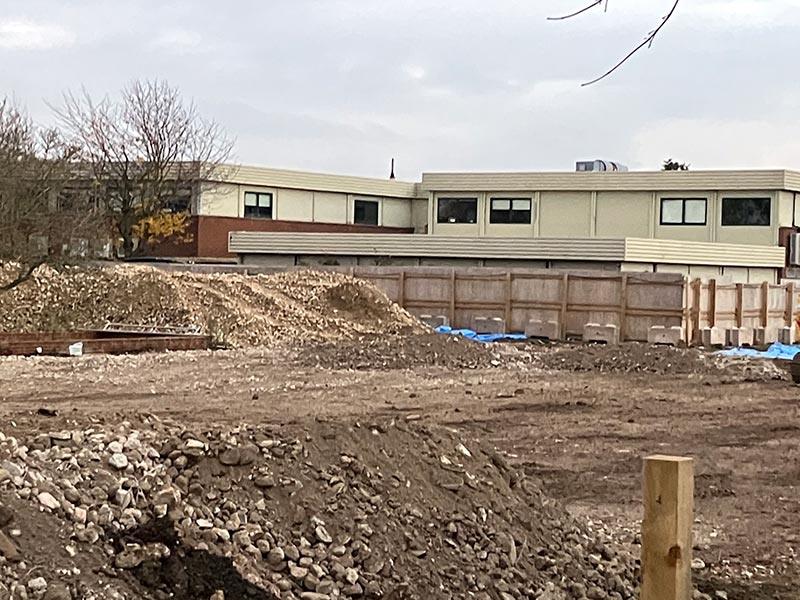What should I do if I find asbestos in land or soil?
Asbestos is, today, a material that is synonymous with serious risk to human health. This is why stringent regulations have long been in place to control its risks. However, this was not always the case in the UK, where asbestos was an extensively used building material for much of the 20th century.
On the subject of unfortunate legacies of the 20th century, standards of construction and demolition also used to be much lower than they are today.
This, combined with the aforementioned heavy use of asbestos in construction – including for the creation of such products as asbestos insulating board, asbestos cement, and asbestos coating – has led to many instances today of asbestos being present in land or soil.
How does asbestos end up in the ground?
With asbestos having been used in the UK not just to manufacture the products mentioned above, but also such others as cement corrugated sheeting, plastic floor tiles, and gaskets, it is fair to say that many buildings in the UK consist of a significant amount of asbestos material.
The importation and use of asbestos in the UK was finally banned in 1999, so buildings constructed in this country after the year 2000 should not contain it. But of course, there are many buildings up and down the country – public, residential, and commercial alike – that do still contain asbestos.
Historically, as buildings predating the year 2000 were demolished, there wasn’t always much care taken or effort made to guard against the risks asbestos presented. Sometimes, a building demolition could take place without the responsible individuals even checking whether asbestos was present – whether intentionally or out of incompetence.
Even intrusive pre-demolition surveys – which are specifically designed to help identify asbestos in a building prior to demolition – weren’t always as thorough as they are today.
When you consider the above possibilities alongside such others as natural deposits, fly-tipping and reburying on site, you can probably quickly understand why asbestos in soils and land can so easily occur.
How to identify asbestos in land or soil
So, what can you do to determine whether asbestos is present in soil or land for which you are responsible? With individual asbestos fibres not generally being visible with the naked eye, this can be a difficult task.
The task in question might be easier, though, if some of the aforementioned asbestos-containing products are present, relatively intact. If you see products in the ground that were historically made from asbestos, and which show flaking or powdering on damaged or worn surfaces, this could be an indicator that the product in question is asbestos-containing material (ACM).
However, the process of trying to spot ACMs using sight alone can be a deeply inexact science. So, you should seek professional advice and help if you do suspect asbestos is present in soil or land for which you are responsible.
Such professionals will be able to investigate the situation while practising the highest safety standards. Their work will include carrying out an asbestos-contaminated land survey, as well as bulk sampling and soil testing. Expert analysis of the sampled materials will allow these professionals – and you – to definitively determine whether they do or do not contain asbestos.
Indeed, with asbestos often being so difficult to spot in the ground, it is simply good practice to arrange for such sampling work by asbestos professionals, before you carry out work on the site such as digging or construction.
What to do if you find asbestos in land or soil
If, in ground for which you are responsible, you do come across materials that you suspect to be asbestos, you are advised to take the following steps:
- Stop work
- Put a cordon or barrier around the area to ensure no one is put at potential risk
- Avoid the area until all information is available and the risk has been identified
- Call in professionals to ascertain the type, extent, and risk of the contamination
It is of critical importance at all stages to avoid any actions that could cause the disturbance of suspected asbestos material. The ingestion or inhalation of asbestos is known to put those exposed at risk of developing asbestos-related disease such as mesothelioma, asbestos-related lung cancer, or asbestosis, and such conditions can be extremely serious or fatal.
When you do arrange for professionals to arrive at your site, once they have carried out their surveying, sampling, and analysis, they will also assess the risk the asbestos presents against the proposed usage of the land in question – for example, any plans for construction on the site.
The risk assessment will require a combination of a contaminated land survey, asbestos in soil sampling, and Waste Acceptance Criteria (WAC) testing. The survey will need to cover the proposed land usage, to ensure the area and depths of potential disturbance are investigated.
From all of this, it will be possible for a plan to be put together, aimed at managing the risk. It is not necessarily the case that asbestos is always removed from land in situations where it is detected; depending on the circumstances of the site, the decision may be made to cap it, or to manage it on an ongoing basis if the material will not be disturbed.
Managing asbestos in soil or land
When you are looking to effectively and safely manage the risks that asbestos could pose in land or soil for which you are responsible, you will need to comply with your “duty to manage” asbestos under the Control of Asbestos Regulations 2012, or CAR 2012.
The “duty to manage” in accordance with CAR 2012 includes a requirement to prepare a plan that sets out in detail how the risks from asbestos materials on your site will be managed. The same legislation also states that you must take the necessary steps to put this plan into action.
What CAR 2012 does not state, is that you must remove asbestos from any and all sites where it is present. So, if there is asbestos in your own soil or land, you will need to make well-informed and responsible decisions on how to best manage the material.
Ground contamination, of course, presents its own distinct challenges for those seeking to manage asbestos, compared to the situation when asbestos is found above ground. Indeed, you might only even become aware of asbestos in the ground at your site because you arranged to have sampling and analysis done prior to digging into that ground.
Nonetheless, there are certain parallels between above-ground and below-ground asbestos management. In both cases, for instance, it might be an option to simply install a capping layer on the asbestos, to effectively seal off and contain it.
If, however, you won’t be able to avoid digging into the ground in which asbestos is present, you will need to arrange for some form of controlled removal of the substance.
For any and all work involving asbestos-containing materials (ACMs) such as that in land or soil for which you are responsible, it is hugely important to seek out the advice and help of reputable and licensed asbestos professionals. Such experts will help ensure you follow the necessary procedures for safe and legal management of any asbestos on your site.
Contact Oracle Solutions for help in relation to asbestos in your soil or land
In summary, you must take safe and responsible steps at every stage if you have reason to suspect that certain materials on your site could be asbestos.
It can be extremely difficult to identify asbestos in the ground when depending on sight alone. So, it is good practice to arrange for the surveying, sampling, and analysis of your site for asbestos, before carrying out work that could disturb such materials.
By seeking out reputable professionals to advise and help, you can ensure you follow all the essential precautions for preventing anyone being exposed to asbestos in your soil or land.
Do you suspect that asbestos might be present on your own site? If so, please don’t hesitate to enquire to Oracle Solutions today. You can reach out to us via phone or email for a fast and free quote.

Written by Jess Scott
Jess Scott has been an all-round asbestos consultant since 1996. That’s nearly 3 decades of asbestos knowledge. He spends his time sharing that knowledge with the team at Oracle and with their clients. Jess's goal is, and always has been, to use my expertise in helping people to comply with the law. This legal compliance ultimately helps to protect everyone from the harmful effects of asbestos. Jess has acted as an asbestos expert witness in legal cases and is involved in many asbestos educational activities throughout the UK.

